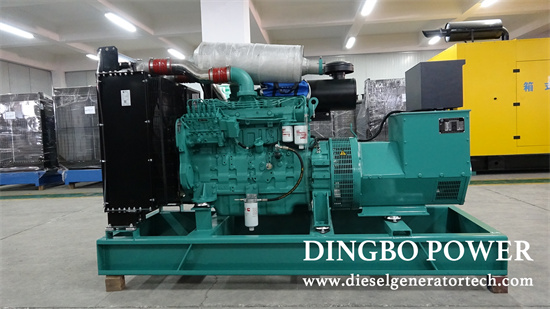When Volvo generators cannot start normally, the reasons should be found from aspects such as starting work, diesel engine fuel supply system, and compression. Today, let's share the reasons why a Volvo generator fails to start properly. To ensure normal operation of a Volvo generator, the first step is to accurately and timely inject well atomized diesel into the combustion chamber, and to ensure that the compressed air in the combustion chamber has a sufficiently high rotational speed and a certain temperature in the cylinder when starting the diesel engine.

The ambient temperature is too low. Before starting the Volvo generator, the diesel engine should be preheated properly, otherwise it is difficult to start. The starting speed is low. For manually started diesel engines, the speed should be gradually increased, and then the pressure reducing handle should be turned to a non pressure reducing position to ensure normal compression in the cylinder. If the pressure reducing mechanism is not adjusted properly or the valve is pressing against the piston, it often feels difficult to shake the car. Its characteristic is that the crankshaft cannot rotate when turned to a certain position, but can be retracted. At this point, in addition to checking the pressure reducing mechanism, it is also necessary to check whether the meshing relationship of the timing gear is incorrect. For diesel engines that use electric starters, if the starting speed is extremely slow, most of the reasons are that the starter is weak, which does not indicate that the diesel engine itself has a malfunction. A detailed inspection should be conducted on the electrical wiring to determine whether the battery is fully charged, whether the wire connections are tight, and whether the starter is working properly.
Check if the battery voltage reaches the rated voltage of 24V, as the electronic control module ECM monitors the entire unit status and the communication between the EMCP control panel relies on battery power supply when the generator is in automatic mode. When an external battery charger malfunctions, the battery cannot be replenished, causing a voltage drop. At this point, the battery must be charged. The charging time depends on the discharge status of the battery and the rated current of the charger. In case of emergency, it is generally recommended to replace the battery.
Check if there is poor contact between the battery terminal and the connecting cable. If the battery electrolyte is replenished too much during maintenance, it may overflow and corrode the surface of the battery. The terminal increases the contact resistance and causes poor cable connection. In this case, sandpaper can be used to polish the corrosion layer between the terminal and cable joint, and then tighten the screws again to make full contact.
Is the wiring between the positive and negative poles of the starting motor loose, causing vibration during generator operation and causing loose wiring, resulting in poor contact. The probability of starting motor failure is relatively low, but it cannot be ruled out. To determine the action of the starting motor, you can touch the casing of the starting motor with your hand at the moment of starting the engine. If the starting motor is stationary and the casing is cold, it indicates that the motor is not operating. Or if the starting motor is severely hot and has a pungent burning smell, the motor coil has been burned out. It is recommended to replace the motor directly after it takes a long time to repair.
There is air entering the fuel system, which is a common fault encountered. It is usually caused by improper handling when replacing the fuel filter element. After air enters the pipeline with fuel, the fuel content in the pipeline decreases, the pressure decreases, and the engine cannot start. At this point, exhaust treatment is required.
Dingbo Power was founded in 1974 and is one of the earliest manufacturers of generators and diesel generator sets in China. If you want get more information, please feel free to send email to sales@dieselgeneratortech.com we will pay highly attention on your question.
Comments
Post a Comment